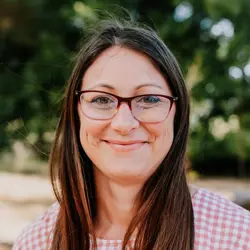Clinical Opal - Investigating Injuries in Children
Billy presents to the local urgent care centre with his mother, she was encouraged to come following a visit with the maternal and child health nurse.
Billy is 8 weeks old, he was born NVD and is up to date with his immunisations. He has been vomiting for the last 3 weeks and is very irritable with a high pitched cry. His mother reports that he does not sleep very well at night time and hardly naps during the day.
You examine Billy and also see that he has some bruising to the back of his ears and a slightly bulging fontanelle. He has a stork mark birthmark on the back of his head and appears to have an inguinal hernia. He is very irritable throughout the examination.
What part of Billy's history and examination raise concerns that there may be a Non-Accidental Injury involved in this presentation?
Bruising in a non mobile child should always raise concerns of non-accidental injury and prompt further assessment. Bruising is one of the most common signs of childhood abuse and is often overlooked or misdiagnosed. The TEN-4 rule is a useful decision making tool to highlight the potential for abuse.
A history of unexplained vomiting, irritability and bulging fontanelle suggests a head injury that may have been sustained at some point. It is estimated that over 30% of abusive head traumas are missed by physicians in very young children who present to health care services without accompanying symptoms such as respiratory compromise or seizures.
Prompt referral of suspected head trauma following NAI to child protection and paediatric specialists for forensic investigations to consider differential diagnosis is recommended.
Related courses
Critical Bytes - Paediatric Trauma
Non Accidental Injury (NAI) in Children.
References

Grace Larson, RN, BN, CertIV(TAE), GradDipClinNurs(PaedCritCare), MAdNursPrac(PaedCritCare), has extensive experience in paediatric nursing, with 13 years in Paediatric Intensive Care Units (PICU). She’s published journal articles in the specialty area of pain and sedation in PICU, and has presented at national and international conferences on the area of pain and sedation in paediatrics. Grace has previously worked with the ACCCN delivering Paediatric Advanced Life Support in Victoria, bringing a wealth of experience into her clinical teaching on paediatric resuscitation. She has also consulted with NSW Health on quality and safety delivering within PICU, and has been contracted with the ANMF to develop nursing programs for nurses who require additional education as part of their practice requirements.
Become a member and get unlimited access to 100s of hours of premium education.
Learn moreSeeking guidance on which courses to prioritise before the CPD year concludes? You're not alone! Essential CPD for Australian nurses covering skills, patient care & standards.
Marjory is a 68 year old in-patient who is 2 days post hip replacement. She is on rivaroxaban (xarelto) for VTE prophylaxis. You find her sitting on the floor of the bathroom, alert but in pain.
We explore the case of Edward, a patient with acute kidney injury (AKI), focusing on renal protection strategies. It explores fluid management, blood pressure control, nephrotoxic drug adjustments, and electrolyte monitoring. Treatment considerations include vasoactive medications, dialysis options like CRRT, and medication dosing to support renal recovery and prevent complications.
